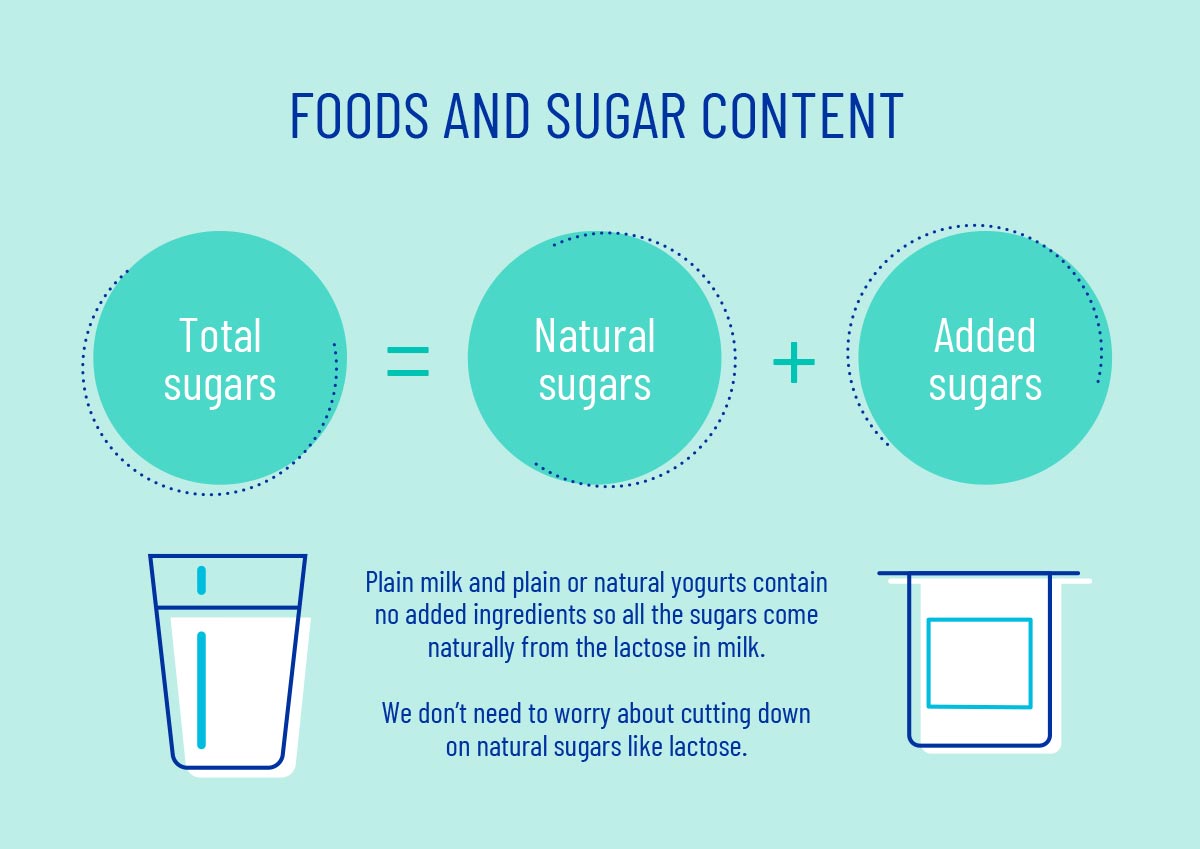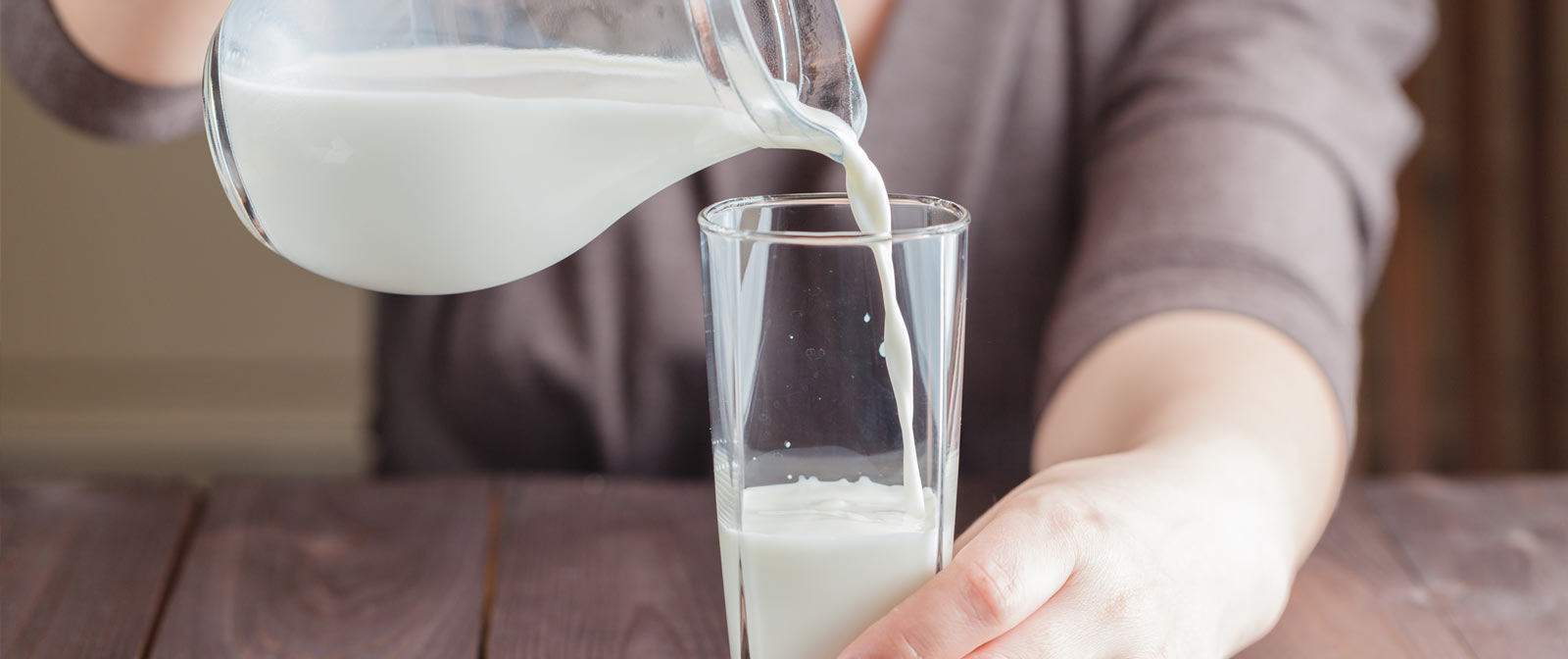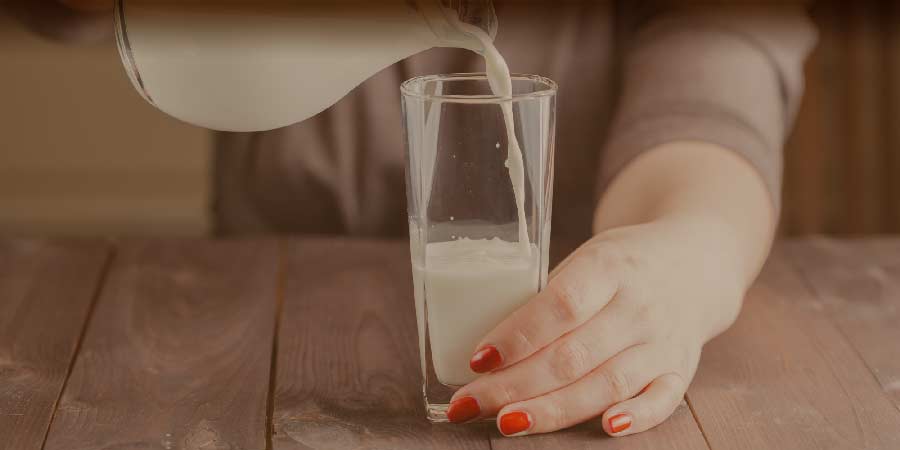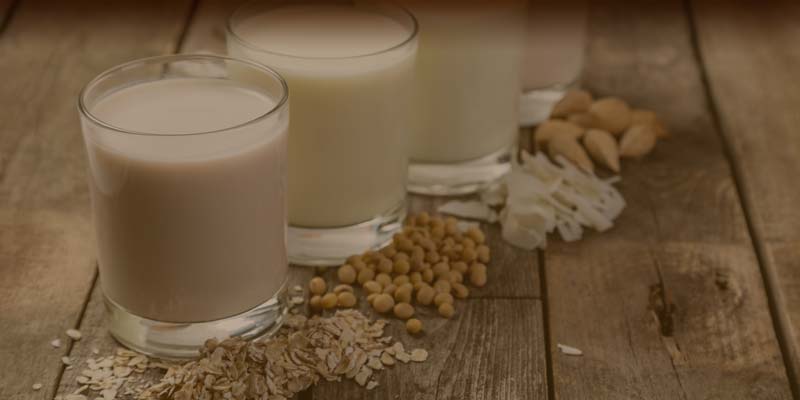Cutting down on the amount of sugar we have in our diet is a great move for our health, but when it comes to dairy there’s no need to worry.
MILK – milk contains a natural sugar called lactose but health organisations around the world, including the NHS, say there’s no need to avoid or limit this type of sugar as it’s not harmful to health. In fact, skimmed, 1% fat, semi-skimmed and whole milk are all free from added sugars.
“Free sugars are those added to food or those naturally present in honey, syrups and unsweetened fruit juices, but exclude lactose in milk and milk products”
The Scientific Advisory Committee on Nutrition
YOGURT – yogurt is made from milk so, like milk, it contains lactose.
- Plain or natural yogurts don’t have any other ingredients added to them so the only sugar they contain is naturally occurring lactose.
- Flavoured yogurts are made from plain yogurt – this means some of the sugar they contain is naturally occurring lactose. Then other ingredients are added for flavour. These may include fruit, sugar and/or ingredients that contain sugar such as honey or chocolate. While many of us should eat fewer sugary foods, it’s worth remembering that yogurt is a nutrient-dense food – in other words, any sugar it contains comes with protein and many vitamins and minerals. The amount of sugar that’s added to yogurt depends on the brand but if you look at the label, you’ll be able to see how much the product contains.
CHEESE – hard cheeses like Cheddar contain virtually no sugars at all. Softer cheeses such as cream cheese or cheese spread do contain some lactose.
LACTOSE INTOLERANCE
Most people in the UK have no problems whatsoever digesting dairy products, and lactose intolerance is far less common than many of us think, with just 8% of people in the UK affected. For those who are, the cause lies in low levels of lactase, the enzyme that’s needed to digest lactose. This means undigested lactose passes into the large intestine where gut bacteria start to break it down, the side effects of which include symptoms such as bloating, wind, an uncomfortable tummy and diarrhoea. In some cases, the condition can be temporary – for example, it can occur after a bout of food poisoning or gastroenteritis, which damages the lining of the gut (it’s the gut lining that produces lactase so if this area is damaged, the production of this enzyme is affected). Once the gut heals, lactase starts to be produced again so foods containing lactose can be eaten once more without symptoms.
The good news is, even if you have lactose intolerance, you don’t automatically need to give up dairy products. Many people with the condition find they can tolerate small amounts of lactose or certain dairy products, such as a small pot of yogurt or a piece of hard cheese, the latter of which contains virtually no lactose. Lactose-free milk is also widely available and contains all the nutrients of regular milk, except for the lactose. It’s important not to avoid dairy unless you have to, as milk and other dairy products provide a wide range of nutrients, including calcium.
SUGAR LABELLING
The ingredients list, nutrition panel and traffic light labelling on the front of food packaging can help us identify what’s in the food we buy.
When looking at the sugar content on the nutrition panel or on the front of packaging, the value is for the total amount of sugar in the product. This includes any sugars that occur naturally such as lactose in milk or fructose in fruit, together with any sugar that’s added. These added sugars are called free sugars and include sugar itself, as well as honey, syrups and fruit juices, concentrates or purees.
We don’t need to worry about cutting down on natural sugars like lactose but we should aim to eat fewer foods that contain a lot of free or added sugars.
“For individuals who are maintaining a healthy body weight, the reduced intake of energy from free sugars should be replaced by energy from starches, sugars contained within the cellular structure of foods and for those who consume dairy products, by lactose naturally present in milk and milk products. Reducing consumption of free sugars would help to lower the risk of dental caries in all individuals”
The Scientific Advisory Committee on Nutrition

Plain milk and plain or natural yogurts contain no added ingredients so all the sugars come naturally from the lactose in milk. There’s no need to limit these.
Flavoured yogurts are based on plain yogurt to which other ingredients are added for flavour. Some of these ingredients may contain sugars. This means the sugar value on a pot of flavoured yogurt will include the natural sugars from milk (lactose) as well as any sugar from added ingredients. As a rough guideline, around 4g of the sugars in 100g yogurt come from the natural sugars in milk. This means if the label for a fruit yogurt says it contains 12g sugars per 100g, around 4g of these sugars come from milk sugars and the remaining 8g sugars come from other ingredients.
You can also look at the ingredients list to see what’s in a pot of yogurt. The foods closest to the top of the list are present in the greatest amounts, while those at the bottom of the list are present in the least amounts.
Health guidelines recommend we stick to less than 90g of total sugars a day. But rest assured that the natural sugar in yogurt comes naturally packaged with protein and many vitamins and minerals.
Last reviewed: 02/2025
Next review due: 02/2027











